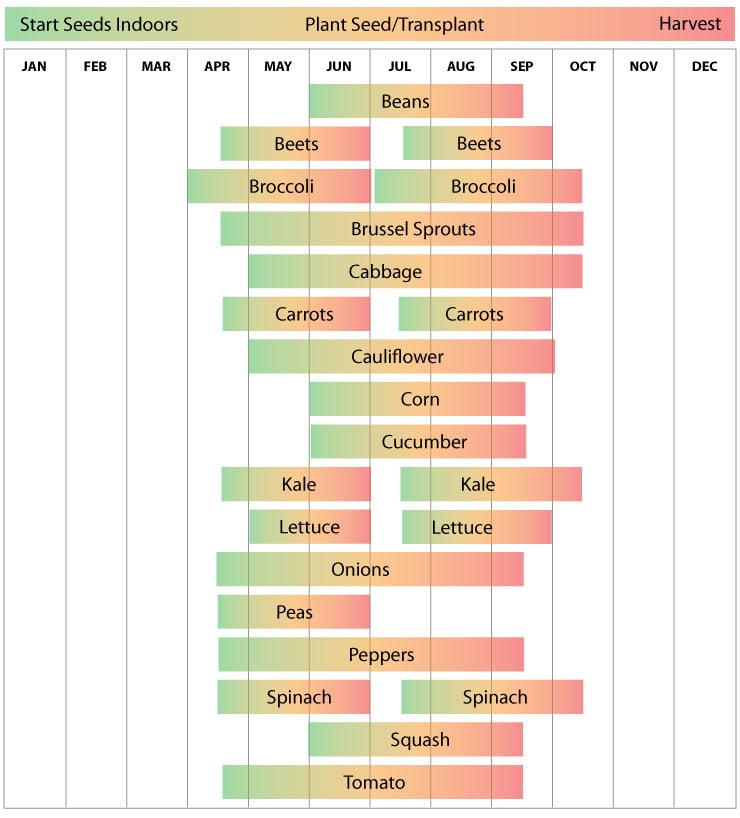Introduction
Planting a garden in New York requires careful timing to ensure your plants thrive through the seasons. The region’s diverse climate zones and distinct seasons influence the best planting windows. Whether you’re a seasoned gardener or a beginner, understanding when to plant is crucial for a bountiful harvest and healthy growth.
This article explores expert advice on the ideal planting times in New York, explains how local climate affects gardening schedules, and offers actionable tips for planting success. We’ll also address common questions about frost dates, soil preparation, and selecting the right plants for your garden’s timeline.
Understanding New York’s Climate Zones and Their Impact on Planting
New York spans multiple USDA hardiness zones, mainly zones 4 through 7, which means planting times vary across the state.
What Are USDA Hardiness Zones?
These zones classify regions by their average minimum winter temperatures. Knowing your zone helps determine which plants can survive your winters and when to plant them.
How Zones Affect Planting Schedules
- Zone 4 (Northern NY): Last frost typically occurs late April to mid-May.
- Zone 5 (Central NY): Last frost ranges from late April to early May.
- Zone 6-7 (Southern NY, including NYC): Last frost usually falls from mid-April to early May.
Gardeners should plan planting around these frost dates to avoid damage to young plants.
Key Planting Dates: When to Start Seeds and Transplant Outdoors
Starting Seeds Indoors
Starting seeds indoors gives plants a head start before the growing season kicks off.
- Begin cold-sensitive seeds like tomatoes and peppers 6-8 weeks before the last expected frost date.
- Hardy vegetables such as broccoli and cabbage can be started 8-10 weeks earlier.
Direct Sowing Outdoors
- Cool-season crops like lettuce, spinach, peas, and radishes can be sown 2-4 weeks before the last frost.
- Warm-season crops such as beans, cucumbers, and squash should be planted after the last frost date when soil temperatures reach at least 60°F.
Transplanting Seedlings
- Harden off seedlings by gradually exposing them to outdoor conditions for 7-10 days before transplanting.
- Transplant warm-season plants only after the danger of frost passes.
Practical Tips for Successful Planting in New York Gardens
Monitor Local Frost Dates
Check reliable local sources or use gardening apps to track your area’s specific frost dates. These dates are critical for timing your planting activities.
Soil Preparation
Prepare your soil early in the season by testing pH and nutrient levels. New York’s soils often benefit from organic amendments like compost to improve fertility and drainage.
Use Raised Beds or Containers
Raised beds warm up faster in spring, allowing earlier planting. Containers can also help control soil quality and temperature.
Choose Appropriate Plant Varieties
Select varieties labeled for your USDA zone or those known to perform well in New York’s climate. Local extension services often provide valuable seed and plant recommendations.
Common Questions About Planting Times in New York
Can I Plant Perennials in Early Spring?
Yes, early spring is an ideal time to plant many perennials. Plant them after the soil thaws but before temperatures consistently rise.
How Does Climate Change Affect Planting Times?
Warmer springs may allow earlier planting, but unexpected frosts still pose risks. Stay alert to weather forecasts and adjust your schedule accordingly.
What Are the Signs That It’s Time to Plant?
Look for soil that is workable (not too wet or cold), consistent daytime temperatures above 50°F, and absence of frost warnings.
Conclusion
Successfully planting a garden in New York hinges on understanding your local climate, especially frost dates and soil conditions. Starting seeds indoors, timing direct sowing, and selecting the right plants are all essential steps. With these expert tips, you can optimize your planting schedule to enjoy a thriving, productive garden.
Remember, each garden is unique—observe your environment closely and adapt your planting times accordingly. Happy gardening!
